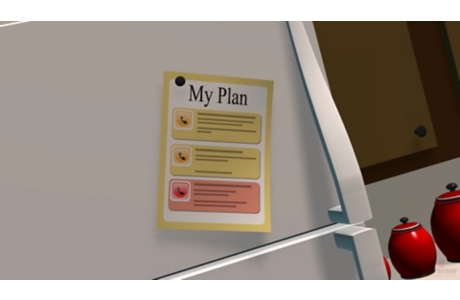Topic Overview
Heart failure means that your heart muscle does not pump as much blood as your body needs. Failure doesn’t mean that your heart has stopped. It means that your heart is not pumping as well as it should.
There is more than one type of heart failure, so you might hear your doctor call it different names. The types are based on what problem in the heart is causing it to not pump blood as well. More than one problem might be causing your heart failure.
People with heart failure can have more than one type. For example, left-sided heart failure can cause right-sided heart failure. In such cases, heart failure doesn’t have more than one cause, but rather the heart failure is affecting the heart in more than one way. In other cases, there may be two separate problems, such as mitral regurgitation causing left-sided heart failure but tricuspid regurgitation causing right-sided heart failure.
Left-sided heart failure
For most people, heart failure affects the left side of the heart. This is the side that pumps blood to the body. The heart’s lower chamber, called the left ventricle, either cannot pump blood as well, or it cannot fill with blood normally. The measurement of how well the heart pumps blood is called the ejection fraction. The ejection fraction is used to help diagnose the type of heart failure.
Right-sided heart failure
Right-sided heart failure means that the right side of the heart is not pumping blood to the lungs as well as normal.
High-output heart failure
High-output heart failure can happen when the body’s need for blood is unusually high. The heart may be working well otherwise, but it cannot pump out enough blood to keep up with this extra need. This type happens to a small number of people who have heart failure.
References
Other Works Consulted
- Yancy CW, et al. (2013). 2013 ACCF/AHA Guideline for the management of heart failure: A report of the American College of Cardiology Foundation/American Heart Association Task Force on Practice Guidelines. Journal of the American College of Cardiology, 62(16): e147–e239.
Credits
Current as ofApril 9, 2019
Author: Healthwise Staff
Medical Review: Rakesh K. Pai, MD – Cardiology, Electrophysiology
E. Gregory Thompson, MD – Internal Medicine
Martin J. Gabica, MD – Family Medicine
Adam Husney, MD – Family Medicine
Stephen Fort, MD, MRCP, FRCPC – Interventional Cardiology
Current as of: April 9, 2019
Author: Healthwise Staff
Medical Review:Rakesh K. Pai, MD – Cardiology, Electrophysiology & E. Gregory Thompson, MD – Internal Medicine & Martin J. Gabica, MD – Family Medicine & Adam Husney, MD – Family Medicine & Stephen Fort, MD, MRCP, FRCPC – Interventional Cardiology






